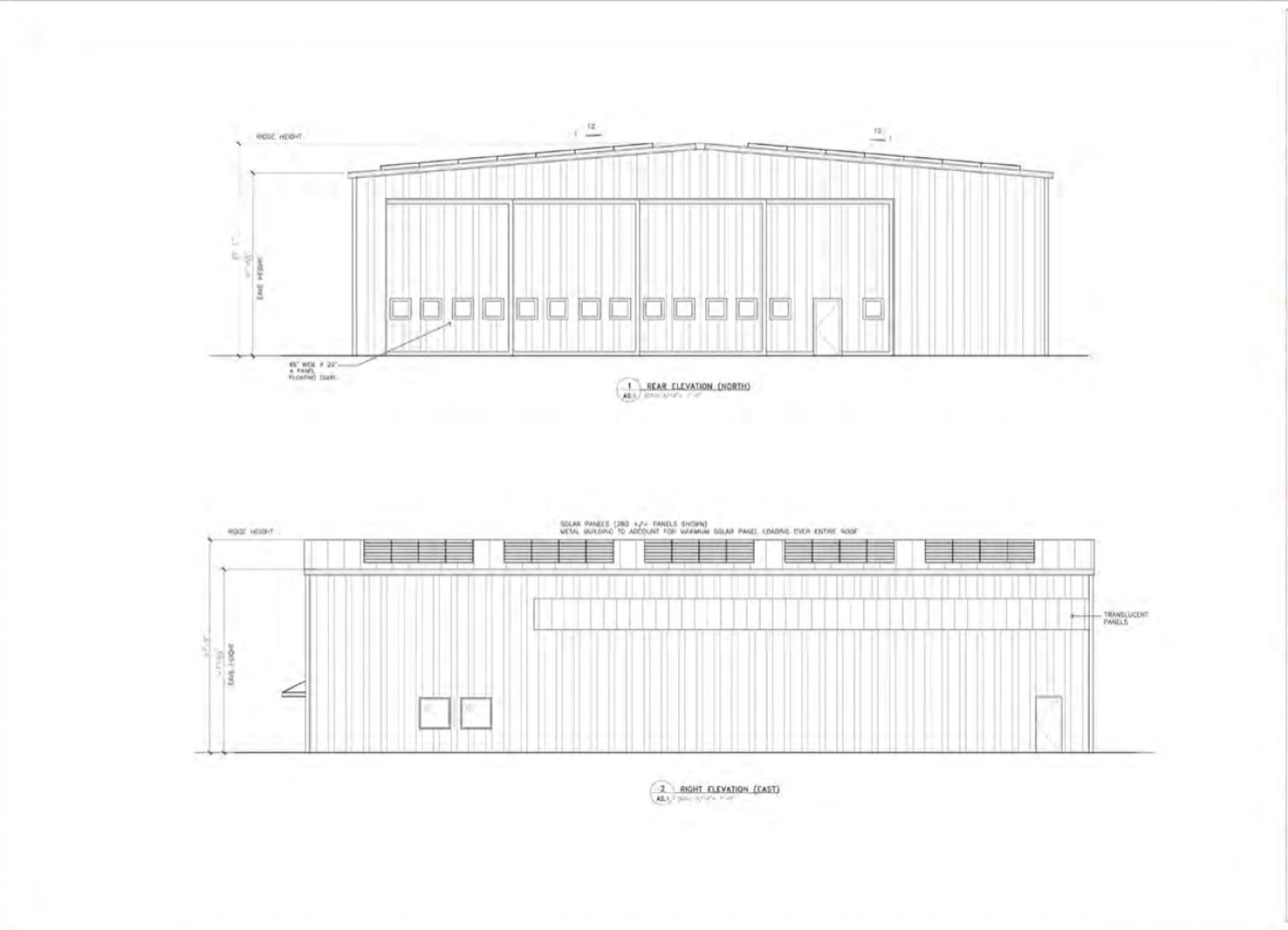A helicopter hangar update that would allow Vineyard Wind to link to its offshore wind farm by air as well as sea opened at a public hearing in front of the Martha’s Vineyard Commission on Thursday.
“The hangar has two primary functions,” Vineyard Wind representative Sarah Schweitzer said at the meeting. “The first is the storage and maintenance of the helicopter. And then the second is the technician support facilities for the [technicians] that will be coming in to board the helicopter.”
The proposal is under review by the commission as a development of regional impact (DRI). The hangar is part of a bigger plan by Vineyard Wind to construct a series of buildings in support of its wind farm, which will be located about 15 miles south of the Island. Vineyard Wind anticipates the farm will be operational in 2023.
Vineyard Wind is currently redeveloping the Tisbury Marine Terminal into a maintenance staging area, a project the commission approved last year. In June the commission opened a public hearing on a plan to build an additional operations facility on Beach road in Vineyard Haven.
The company has federal approval to build the 62-turbine wind farm, which will supply 800 megawatts of renewable energy to the New England grid and reduce carbon emissions by an estimated 1.6 million tons per year. Between the various facilities the goal is to provide some 40 year-round jobs on the Island.
The proposal is to demolish a roughly 8,500-square-foot hangar, which was originally built in 1973 and is currently used for storage. The new hangar would be a little more than 9,000 square feet and include space for a helicopter, staff area bathrooms and storage space. The hangar is meant to serve the 30-year operational lifespan of the wind farm.
“The hangar facility is only being designed for one helicopter,” Ms. Schweitzer said.
The plan is to use the helicopter year-round to shuttle technicians to and from the farm, provide visual inspections and help with repairs as needed. The helicopter is projected to make between two and four round trips per day for an estimated 300 days per year depending on weather. The helicopter will be used in conjunction with boats to transport crew.
“The helicopter and vessels will operate together. It’s an integrated solution,” Ms. Schweitzer said. “They both complement one another for the overall operation, so the helicopter is as important as the vessels.”
The helicopter is also important, Ms. Schweitzer said, because of it mitigates risk to the North Atlantic right whale caused by boat traffic.
“A huge part of the helicopter is related to the North Atlantic right whale,” she said.
Commissioner questions focused on air traffic and the function of the hangar.
Commissioner Doug Sederholm wondered about the helicopter’s flight path and the noise generated by it.
“There are two large residential areas directly to the south of the airport on either side of the flight path into the main runway,” Mr. Sederholm said. “And it does not appear that helicopters are prohibited from flying over those residential areas.”
Airport director Geoff Freeman said the helicopter operator will enter a written agreement with air traffic control to avoid the residential areas.
“We’re on a very good path to have a comprehensive agreement that will lessen any impacts to the communities,” Mr. Freeman said.
Commissioner Fred Hancock asked if the helicopter will be used to do aerial work on the turbines.
“The helicopter will primarily deliver the crew,” Ms. Schweitzer said. “It will not hover next to the turbines for any work; it will deliver [technicians] and equipment”
In other business Thursday, commissioners unanimously voted to approve the Island Autism Group’s master plan. The plan is to provide residences and programming for Islanders living with autism on a farm-style campus in West Tisbury.
“It’s such a pleasure to review a project which is so well thought out and provides such a tremendous service to the community,” MVC chair Joan Malkin said.






Comments (20)
Comments
Comment policy »